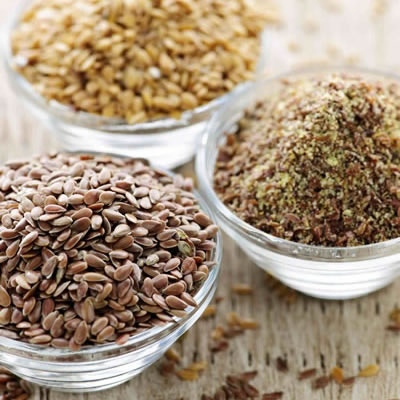Origin
Flaxseed (Linum usitatissimum L.) is an ancient crop which is traced back to 3000 B.C. in Babylon and the fertile valleys of Mesopotamia. Its cultivation spread to West Asia and Europe. It was reported that in the 18th Century King Charlemagne was the first to recognize its health benefits.
A renewed interest in flaxseed has emerged in the last few decades in North America and Europe as a functional food and as an environmentally friendly crop. Today, Canada grows about 80% of global of this seed’s production.2,3
Function3
A broad range of functional benefits are attributed to flaxseed in baked goods including:
- Thickening: due to both the meal and flour’s high water absorption, moisture binding and lubrication capacities
- Stabilizing: its mucilage is a good stabilizer for foam and protein based emulsions
- Taste and flavor: provides a characteristic nutty taste to baked products
- Color: brown flaxseed provides baked goods with desirable dark brown color
- Delayed staling: mucilage high water absorption capacity can helps delay staling
Nutrition
Flaxseed is an exceptional source of dietary fibers, both soluble and insoluble. It contains high quality protein, lignans and mucilage, omega-3 and omega-6 fatty acids as well as phytonutrients. Benefits of consuming this seed include lowering cholesterol and blood pressure. Also, reduced risk of stroke, diabetes and breast cancer.4
Commercial production5
Flaxseed oil and flour are produced through the following processes:
- Cold pressing: the seeds are crushed using a press or screw to remove the oil
- Collection: the resulting cake is collected for further processing
- Grinding: the cake is ground to reduce the particle size
- Separation: powder is separated to different size sieves
Application
Flaxseed meal and flour can be used in baked goods as nutritious components as well as fat or egg replacement. Doughs and batters containing flaxseed may require more water due to the mucilage’s high water absorption capacity. No significant changes in flavor are detected when this meal or flour is added at 10% or less of bread flour weight.1
Following is a summary of the impact of various forms of flaxseed on baked goods:3
| Form | Bakery system | Effect |
| Flax flour | Bread |
|
| Cookies |
|
|
| Bagels |
|
|
| Flaxseed oil | Biscuits |
|
| Cookies6 |
|
FDA regulations
Whole, milled and high linolenic acid flaxseed oil are Generally Recognized as Safe (GRAS) by the Food and Drug Administration since 2009.7
References
- Figoni, P. I. How Baking Works: Exploring The Fundamentals Of Baking Science. 3rd ed., John Wiley & Sons, 2011, p. 124.
- Muir, Alister D, and Neil D Westcott. Flax: The Genus Linum. 1st ed., Taylor & Francis, 2003, pp. 1-9.
- Goyal, Ankit et al. “Flax And Flaxseed Oil: An Ancient Medicine & Modern Functional Food”. Journal Of Food Science And Technology, vol 51, no. 9, 2014, pp. 1633-1653. Springer Science And Business Media LLC, doi:10.1007/s13197-013-1247-9. Accessed 23 Apr 2020.
- Hussain, S. et al. “Functional Flaxseed In Baking”. Quality Assurance And Safety Of Crops & Foods, vol 5, no. 4, 2013, pp. 375-385. Researchgate, doi:10.3920/qas2012.0207. Accessed 24 Apr 2020.
- Singh, K, Mridula, D, Rehal, J & Barnwal, P. “Flaxseed: A Potential Source of Food, Feed and Fiber”. Critical reviews in food science and nutrition. 51. 210-22. (2011). 10.1080/10408390903537241.
- Rangrej, V et al. “Effect of shortening replacement with flaxseed oil on physical, sensory, fatty acid and storage characteristics of cookies.” Journal of food science and technology vol. 52,6 (2015): 3694-700. doi:10.1007/s13197-014-1430-7
- Food and Drug Administration (FDA). “GRAS Notices”. Accessdata.Fda.Gov, 2009, https://www.accessdata.fda.gov/scripts/fdcc/?set=GRASNotices&sort=GRN_No&order=DESC&startrow=1&type=basic&search=flaxseed . Accessed 18 Apr 2020.

